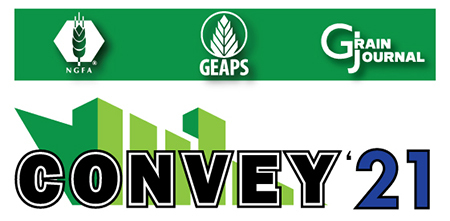S.L.A.M.: Sanitation, Loading, Aeration, Monitoring For Grain Quality Management


This article is based on a portion of a presentation by Dr. Dirk Maier, professor and post-harvest engineer, Iowa State University, Ames, July 13 at the CONVEY ‘21 conference in Omaha, NE. To view a recording of the presentation, go to convey21.com.
S.L.A.M. stands for sanitation, loading, aeration, and monitoring. This acronym encompasses four areas of best practices for grain quality management.
Sanitation
Sanitation consists of housekeeping throughout the facility, including around, inside, and outside handling equipment, transportation vehicles, and storage structures. It also consists of good pest control, which is of great importance today.
Loading
The way you load and unload structures, including screening, also has an impact on grain quality. Coring is a must when filling a structure to ensure fines are distributed evenly. Without coring, you will be unable to aerate the grain mass efficiently. Leveling with a mechanical or gravity spreader also helps with proper loading. Also, make sure to repair any potential areas of air leakage, such as cracks in the structure or slight openings around fans.
Aeration
Selecting proper ambient air conditions during fan operation hours is critical for avoiding overdrying during long-term storage. Conversely, underdrying could lead to the development of mold.
You cannot maintain the quality of stored grain without first understanding the concept of equilibrium moisture content (EMC).
EMC is the level of moisture to which grain will equilibrate when exposed to particular drying or re-wetting air conditions. This relationship is of particular importance for grain cooling, drying, conditioning, and re-wetting.
The chart below shows the EMC of c corn. The red line, representing the isotherm, shows the fixed relationship between the relative humidity of the air and the moisture content of corn. Understanding this relationship means you will know where grain will equilibrate given the moisture content and ambient temperature.
Aeration cooling of grain follows the wet-bulb temperature. For given air properties, calculations can be made to determine the dry-bulb temperature the grain will cool to, as well as the moisture content of the grain will equilibrate toward.
Shrink loss due to aeration cooling can be calculated based on the evaporative cooling effect. Shrink loss costs includes moisture loss and electric fan energy due to excessive operation.
For further assistance, Android phone users (iOS coming soon) can download the new Grain Aeration and Storage mobile app, developed by Iowa State University and INTA, with tools for areas such as: cooling aeration prediction, aeration weather forecast, and air-grain moisture relationships.
Monitoring
Stored grain should be checked routinely for temperature, moisture, carbon dioxide (CO2), molds, insects, and rodents. A grain temperature monitoring system is a good tool for grain elevator operators, but only if you realize that temperature sensors have a limited range and grain is a good insulator.
Assuming sensors are spaced 7 feet apart along the cable, and that each sensor covers a sphere of 3-1/2 feet without overlap between sensors, seven temperature cables in a 48-foot-diameter bin would cover only 10.8% of the grain mass.
In a computer-generated test scenario, 3,000 sensors gave an average temperature of 27 degrees F; 15 sensors gave an average temperature of 24 degrees F; and 30 sensors gave an average temperature of 18 degrees F. Realize that placement of temperature cables is more important than number of sensors.
While temperature cables are useful for measuring cooling fronts, they cannot always find a storage problem. Therefore, it is highly recommended to invest in CO2 monitoring capabilities, such as a plug-and-play, no-cable monitoring system or a handheld CO2 monitor. CO2 monitoring will alert you to a storage problem early enough that it typically can be alleviated by running the aeration system.